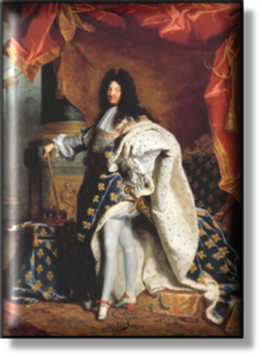 xxxxxLouis XIV was one of the most famous but not necessarily most successful of French kings. He succeeded his father Louis XIII in 1643, at the age of four, so until 1661 the government was mainly in the hands of his mother, Anne of Austria, and her chief minister, Jules Mazarin. During this period he witnessed five years of civil war and this doubtless determined his future policy. When he eventually came to the throne he was determined to keep all power in his own hands, and to enlarge his kingdom. As a result, his glittering reign was almost entirely taken up with a series of wars. Led by his generals Condé and Turenne, these secured France's eastern and northern frontiers, but by the turn of the century this long period of conflict had brought his country close to bankruptcy.
xxxxxLouis XIV was one of the most famous but not necessarily most successful of French kings. He succeeded his father Louis XIII in 1643, at the age of four, so until 1661 the government was mainly in the hands of his mother, Anne of Austria, and her chief minister, Jules Mazarin. During this period he witnessed five years of civil war and this doubtless determined his future policy. When he eventually came to the throne he was determined to keep all power in his own hands, and to enlarge his kingdom. As a result, his glittering reign was almost entirely taken up with a series of wars. Led by his generals Condé and Turenne, these secured France's eastern and northern frontiers, but by the turn of the century this long period of conflict had brought his country close to bankruptcy.
xxxxxHisxfirst major conflict, known as the War of Devolution, followed the death of his father-in-law, Philip IV of Spain, in 1665. Louis claimed that the Spanish Netherlands were part of the inheritance due to his wife, Marie Therese of Austria, and should therefore pass to him by right of devolution. As a consequence, in 1667 he took over part of this territory and then went on to seize Franche Comté, another Spanish possession situated along France's eastern border. This rang alarm bells in Europe and the three Protestant states of England, Holland and Sweden formed the Triple Alliance to cut the new king down to size. Louis was obliged to come to the negotiating table. Byxthe Treaty of Aix-la-Chapelle in 1668 he had to give up Franche Comté, but, nevertheless, he managed to hold on to part of the Spanish Netherlands, including a number of frontier fortresses.
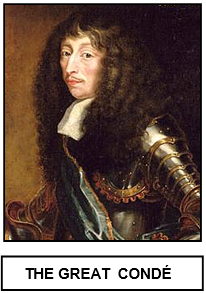 xxxxxHis next target was Holland, a country which, as an absolute, Roman Catholic monarch, Louis had every reason to dislike and distrust. It was not only a republic, but a Protestant republic, and a very successful republic, waxing rich on international trade and finance, and prepared to stand in the way of his own schemes of aggrandisement. In 1672 he launched a full-scale invasion of the Netherlands, this time with the assistance of England - bent on starting the Third Anglo-Dutch War in order to avenge the humiliation of the Second! Within a matter of weeks he had overrun three of the seven provinces, but he had not counted on the resourcefulness of the Dutch under the leadership of William of Orange. The dikes around Amsterdam were opened, and large areas of the country were flooded, putting a halt to the French advance, and giving the Dutch time to regroup and seek allies. This they did, and in 1673 Spain, Leopold I (the Holy Roman Emperor), and the Elector of Brandenburg came to their aid. By early 1674 the French forces had been driven out of the Republic, and England, having suffered defeats at sea, had pulled out of the war by the Treaty of Westminster.
xxxxxHis next target was Holland, a country which, as an absolute, Roman Catholic monarch, Louis had every reason to dislike and distrust. It was not only a republic, but a Protestant republic, and a very successful republic, waxing rich on international trade and finance, and prepared to stand in the way of his own schemes of aggrandisement. In 1672 he launched a full-scale invasion of the Netherlands, this time with the assistance of England - bent on starting the Third Anglo-Dutch War in order to avenge the humiliation of the Second! Within a matter of weeks he had overrun three of the seven provinces, but he had not counted on the resourcefulness of the Dutch under the leadership of William of Orange. The dikes around Amsterdam were opened, and large areas of the country were flooded, putting a halt to the French advance, and giving the Dutch time to regroup and seek allies. This they did, and in 1673 Spain, Leopold I (the Holy Roman Emperor), and the Elector of Brandenburg came to their aid. By early 1674 the French forces had been driven out of the Republic, and England, having suffered defeats at sea, had pulled out of the war by the Treaty of Westminster.
xxxxxBut the so-called Franco-Dutch War continued; this time on a different front. Over the next four years the French, aided by the Swedes, advanced steadily into the Spanish Netherlands and along the Rhine. When peace was eventually agreed at the Treaties of Nijmegen, 1678 and 1679, the Dutch Republic remained intact, but the French had gained Franche-Comté from the Spanish, together with Artois and 16 fortified towns in Flanders, thus substantially adding to the security of their north eastern frontier. Louis was now at the height of his power but, as we shall see in the War of the Grand Alliance, which began in 1689 (W3), this was by no means the end of his military campaigns for the glory and expansion of France.
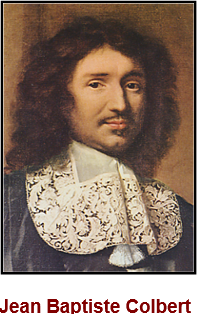 xxxxxAt home, Louis' power was absolute. His statement L'État c'est moi (I am the State) was no idle boast. Nowhere was this more evident than at his stupendous palace at Versailles. Herexthe Roi de Soleil (Sun King) presided over a sumptuous, extravagant court, all made possible by the successful reforms of his financial advisor Jean Baptiste Colbert - who had replaced Nicolas Fourquet in 1665. Under him the country's finances were put on a firm footing, the country's export trade was substantially increased, colonies were
xxxxxAt home, Louis' power was absolute. His statement L'État c'est moi (I am the State) was no idle boast. Nowhere was this more evident than at his stupendous palace at Versailles. Herexthe Roi de Soleil (Sun King) presided over a sumptuous, extravagant court, all made possible by the successful reforms of his financial advisor Jean Baptiste Colbert - who had replaced Nicolas Fourquet in 1665. Under him the country's finances were put on a firm footing, the country's export trade was substantially increased, colonies were 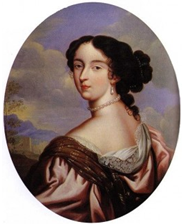 set up in India, the navy was rebuilt, and money was poured into the army, making it one of the finest in Europe. Within a short time France was universally admired. Andxapart from Colbert, the king had a source of ready advice from his long line of mistresses, notably the Marquise de Maintenon (1635-1719) (illustrated), whom he married after his wife died in 1683. As a firm supporter of the Jesuits, some argue that it was she who played an important part in persuading Louis to revoke the Edict of Nantes in October 1685 (J2) - with dire consequences for the country’s economy.
set up in India, the navy was rebuilt, and money was poured into the army, making it one of the finest in Europe. Within a short time France was universally admired. Andxapart from Colbert, the king had a source of ready advice from his long line of mistresses, notably the Marquise de Maintenon (1635-1719) (illustrated), whom he married after his wife died in 1683. As a firm supporter of the Jesuits, some argue that it was she who played an important part in persuading Louis to revoke the Edict of Nantes in October 1685 (J2) - with dire consequences for the country’s economy.
xxxxxLouis' decision to go it alone in 1661 was doubtless influenced by a troubled childhood. As we have seen, during his minority there were two serious uprisings against the rule of Mazarin, led by the nobles and members of the Paris law court. This civil war, known as the Parlementary and Princely Frondes, raged for five years (1648-53) and came close to overthrowing the government and, with it, 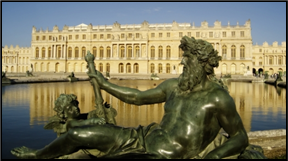 the young king. On one occasion he and his mother were held under house arrest, and twice they were forced to leave Paris. This made him ever suspicious of the nobility, and ever determined to impose law and order as of divine right. On coming to power he dispensed with a chief minister, and set about establishing absolute authority, working through a state council which was entirely under his thumb, and making every detail of government his own business. The Palace of Versailles was built to impress and it was, indeed, a vast and glittering place of entertainment for the French élite and visiting nobility, but it was also the seat of French government, Louis XIV's government. It is estimated that some 20,000 people were involved in the work of the court, with over 1,000 courtiers and their attendants living in the palace itself. Soldiers and servants were quartered within the grounds or billeted in the town.
the young king. On one occasion he and his mother were held under house arrest, and twice they were forced to leave Paris. This made him ever suspicious of the nobility, and ever determined to impose law and order as of divine right. On coming to power he dispensed with a chief minister, and set about establishing absolute authority, working through a state council which was entirely under his thumb, and making every detail of government his own business. The Palace of Versailles was built to impress and it was, indeed, a vast and glittering place of entertainment for the French élite and visiting nobility, but it was also the seat of French government, Louis XIV's government. It is estimated that some 20,000 people were involved in the work of the court, with over 1,000 courtiers and their attendants living in the palace itself. Soldiers and servants were quartered within the grounds or billeted in the town.
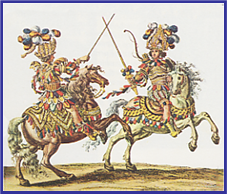
xxxxxDuring his long reign the king was a generous patron of the arts and sciences. In the building and decorating of Versailles, as well as other royal palaces and civic buildings, he employed and encouraged French artists like Louis Le Vau, André Le Nôtre and Charles Le Brun. He founded the Academy of Painting and Sculpture in 1663, the Academy of Science in 1666, and the Paris Observatory the following year. Illustrated here is a horseback exhibition at Versailles.
xxxxxHe established the Comédie Française in 1680, welcomed theatre performances at Versailles - including plays by Corneille, Molière and Racine - and encouraged the works of Nicolas Boileau and Jacques Bossuet. He was also interested in architecture, setting up the Academy of Architecture in 1671, and playing a leading role in the design of Paris, including the planning of the Avenue des Champs-Élysées, the completion of the Louvre, and the building of Les Invalides, a home for disabled soldiers.
xxxxxIncidentally, Louis XIV was very fond of music and dancing. Indeed, it was his performance as the sun in Le Ballet de la Nuit, aged 15, that earned him the name of "The Sun King", a title which became a personal symbol of his wealth, power and splendour. ......
xxxxx...... Axwell-observed insight into the life of the court at Versailles is contained in the Memoires of the French writer, Madame de La Fayette, author in 1678 of La Princess de Clèves, the first serious historical novel produced in France. Andxanother revealing peep into court life was given a little later by the French historian the Duc de Saint-Simon (1675-1755). His Memoires, covering the years 1691 to 1723, and completed in 1746, pulled no punches, providing a vivid insight into the intrigues and follies of court life, full of rogues, fools and hypocrites. It would not be surprising, as some suggest, that they were confiscated by the state after his death. This might well account for the fact that they were not published until 1788. ......
xxxx ...… As one would imagine, court life was not without its scandals. They came no more sensational than "the Affair of the Poisons" of 1679, when an official inquiry revealed that members of the nobility, and others, had been seeking out women fortune tellers to obtain drugs and poisons and, in some cases, to deal in black magic. In April that year a special tribunal was set up, known as the chambre ardente, and this uncovered a group of high-born ladies, led by a certain Madame Monvoison, who specialised in abortions and poisoning husbands. In 1680 Monvoison and 35 other women were burnt at the stake, but when the king's one-time mistress, Madame de Montespan became implicated, the trials were suddenly stopped, and the remainder of the accused, over 80, were simply imprisoned for life!
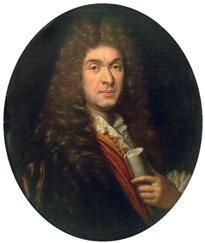
xxxxxThe musician that provided much of the king's court music was the French composer Jean-Baptiste Lully (1638-87). He was born in Florence, Italy, but entered the service of Louis XIV as a violinist at the age of 14, and later became a naturalised Frenchman. Highly ambitious and hardworking, he later conducted Les Petits-Violons du Roi, the king's personal orchestra, and in 1652 reached the height of his court career when he was appointed music master to the royal family. It was soon after this that he composed the first minuet, a "small" or "neat" dance which was destined to become highly popular in ballrooms throughout Europe.
xxxxxAs the court's music master he composed ballets for Louis XIV - in some of which the king took part - and, working with the French playwright Molière over a period of seven years, produced a number of comedy ballets, including the masterpieces Le mariage forcé of 1665, and Le bourgeois gentilhomme, five years later. Inx1681 he and the king's dancing master, Pierre Beauchamps (1631-1705), produced Le Triomphe de l'Amour, a work clearly showing the way in which, under their guidance, the ballet had evolved from a light piece of entertainment at court to an art form with professional status. It is hardly surprising that the French language was adopted to describe ballet technique.
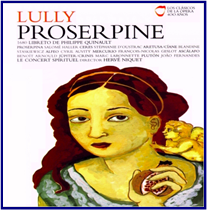
xxxxxIn 1672 his career changed direction. It was in that year that, having got himself appointed director of the Académie Royale de Musique, he turned to the production of opera, a form he called "tragédie-lyrique". Hexcomposed 20 over the next fourteen years, many in collaboration with the librettist Philippe Quinault (1635-1688). These works included Atys, Isis, Proserpine, Persée, Amadis de Gaule, Acis et Galatée and Le Temple de la paix. As one might expect, the librettos for these operas were generally based on the classical tragedies of the French dramatists Pierre Corneille and Jean Racine. As a consequence, the music was somewhat formal and measured, whilst the choral and instrumental episodes and the ballet sequences typified the grandeur of the French court.
xxxxxIn the production of these works he created the French overture - containing one movement with slow and fast sections -, made much use of the bassoon and the new instrument, the oboe, and brought orchestration to a fine art. His style of composition had a marked effect throughout Europe, and, as we shall see, the French composer Jean-Philippe Rameau was particularly influenced by his operatic works.
xxxxxIncidentally, Lully's death at the age of 54 was the result of an accident. Whilst conducting during a concert, and beating time on the floor with a heavy baton, he struck his foot. The resulting wound became infected and he died of gangrene poisoning.




 xxxxxLouis XIV was one of the most famous but not necessarily most successful of French kings. He succeeded his father Louis XIII in 1643, at the age of four, so until 1661 the government was mainly in the hands of his mother, Anne of Austria, and her chief minister, Jules Mazarin. During this period he witnessed five years of civil war and this doubtless determined his future policy. When he eventually came to the throne he was determined to keep all power in his own hands, and to enlarge his kingdom. As a result, his glittering reign was almost entirely taken up with a series of wars. Led by his generals Condé and Turenne, these secured France's eastern and northern frontiers, but by the turn of the century this long period of conflict had brought his country close to bankruptcy.
xxxxxLouis XIV was one of the most famous but not necessarily most successful of French kings. He succeeded his father Louis XIII in 1643, at the age of four, so until 1661 the government was mainly in the hands of his mother, Anne of Austria, and her chief minister, Jules Mazarin. During this period he witnessed five years of civil war and this doubtless determined his future policy. When he eventually came to the throne he was determined to keep all power in his own hands, and to enlarge his kingdom. As a result, his glittering reign was almost entirely taken up with a series of wars. Led by his generals Condé and Turenne, these secured France's eastern and northern frontiers, but by the turn of the century this long period of conflict had brought his country close to bankruptcy.  xxxxxHis next target was Holland, a country which, as an absolute, Roman Catholic monarch, Louis had every reason to dislike and distrust. It was not only a republic, but a Protestant republic, and a very successful republic, waxing rich on international trade and finance, and prepared to stand in the way of his own schemes of aggrandisement. In 1672 he launched a full-
xxxxxHis next target was Holland, a country which, as an absolute, Roman Catholic monarch, Louis had every reason to dislike and distrust. It was not only a republic, but a Protestant republic, and a very successful republic, waxing rich on international trade and finance, and prepared to stand in the way of his own schemes of aggrandisement. In 1672 he launched a full- xxxxxAt home, Louis' power was absolute. His statement L'État c'est moi (I am the State) was no idle boast. Nowhere was this more evident than at his stupendous palace at Versailles. Herexthe Roi de Soleil (Sun King) presided over a sumptuous, extravagant court, all made possible by the successful reforms of his financial advisor Jean Baptiste Colbert -
xxxxxAt home, Louis' power was absolute. His statement L'État c'est moi (I am the State) was no idle boast. Nowhere was this more evident than at his stupendous palace at Versailles. Herexthe Roi de Soleil (Sun King) presided over a sumptuous, extravagant court, all made possible by the successful reforms of his financial advisor Jean Baptiste Colbert - set up in India, the navy was rebuilt, and money was poured into the army, making it one of the finest in Europe. Within a short time France was universally admired. And
set up in India, the navy was rebuilt, and money was poured into the army, making it one of the finest in Europe. Within a short time France was universally admired. And the young king. On one occasion he and his mother were held under house arrest, and twice they were forced to leave Paris. This made him ever suspicious of the nobility, and ever determined to impose law and order as of divine right. On coming to power he dispensed with a chief minister, and set about establishing absolute authority, working through a state council which was entirely under his thumb, and making every detail of government his own business. The Palace of Versailles was built to impress and it was, indeed, a vast and glittering place of entertainment for the French élite and visiting nobility, but it was also the seat of French government, Louis XIV's government. It is estimated that some 20,000 people were involved in the work of the court, with over 1,000 courtiers and their attendants living in the palace itself. Soldiers and servants were quartered within the grounds or billeted in the town.
the young king. On one occasion he and his mother were held under house arrest, and twice they were forced to leave Paris. This made him ever suspicious of the nobility, and ever determined to impose law and order as of divine right. On coming to power he dispensed with a chief minister, and set about establishing absolute authority, working through a state council which was entirely under his thumb, and making every detail of government his own business. The Palace of Versailles was built to impress and it was, indeed, a vast and glittering place of entertainment for the French élite and visiting nobility, but it was also the seat of French government, Louis XIV's government. It is estimated that some 20,000 people were involved in the work of the court, with over 1,000 courtiers and their attendants living in the palace itself. Soldiers and servants were quartered within the grounds or billeted in the town.




